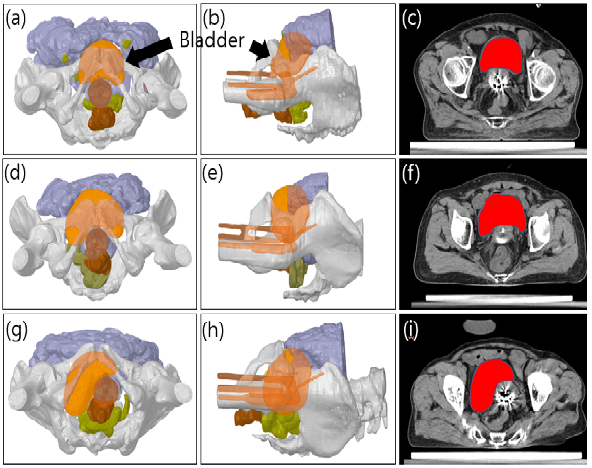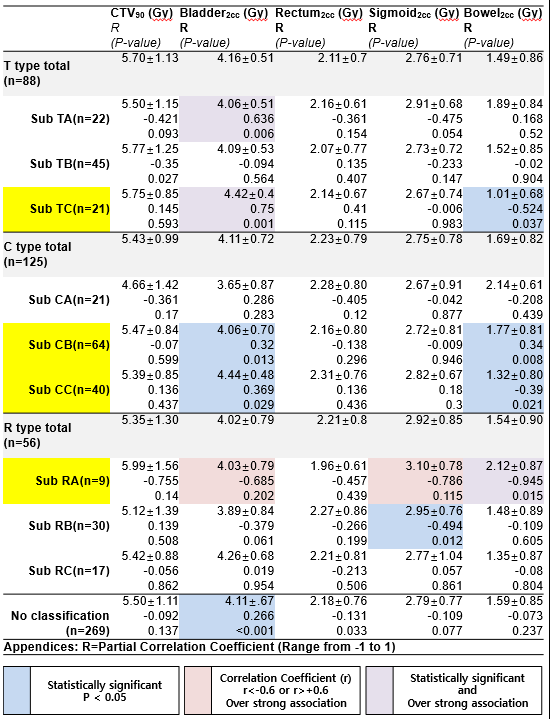Comparison of doses according to bladder classification in brachytherapy for cervical cancer
Euncheol Choi,
Korea Republic of
PO-2143
Abstract
Comparison of doses according to bladder classification in brachytherapy for cervical cancer
Authors: Euncheol Choi1, Youngkee Oh1, Myeongsoo Kim2
1Keimyung University Dongsan Hospital, Keimyung University School of Medicine, Department of Radiation Oncology, Daegu, Korea Republic of; 2Keimyung University Dongsan Hospital, Department of Radiation Oncology, Daegu, Korea Republic of
Show Affiliations
Hide Affiliations
Purpose or Objective
The typical local treatments used for cervical cancer are surgery and radiation therapy. Radiation therapy includes external radiation therapy and intracavitary brachytherapy using isotopes (192Ir), and may be used in parallel, sequentially, or alone as needed. For tumors larger than 4 cm or stage Ⅱ or higher, radiation therapy and chemotherapy are mainly combined, and brachytherapy is essential after external irradiation. This study aimed to investigate the impact of classification technique of type of bladder filling (ToBF) to optimum the bladder volume (BV), dose saving effects of organs and risk (OARs) and tumor for cervical cancer brachytherapy.
Material and Methods
This retrospective study was conducted on 269 patients who received intracavitary brachytherapy for cervical cancer between 2016 and 2022. Treatment doses to D90 of HR-CTV, D2cc of bladder, D2cc of rectum, D2cc of bowel and D2cc of sigmoid were calculated by using forward planning technique based on CT and MR images. The ToBF classification with an inserted applicator was divided into three types (tilted: type T, curved: type C and round: type R). The ToBF was classified into three subgroups according to the BV (cm3) as a group A: BV<200 cc, a group B: 200 cc

Figure 1. Representative 3D image and CT image examples according to the bladder type classification : a,b,c=R type, d,e,f=C type, g,h,i=T type (Black arrow and red area=bladder).
Results
In variances across the BV groups, the mean doses of bladder and rectum doses showed a significant difference according to BV (P<0.001). The group A had the lowest D2cc of bladder with an average of 3.89±0.7 Gy and the highest D90 of HR-CTV with an average of 5.54±1.4 Gy. The D2cc of bowel was 2.03±.0.8 Gy, which was slightly higher than the EMBRACE guideline (D2cc<1.95 Gy). This showed analogous results as a previously reported cross-group comparison studies for BV and dose of OARs.
In applying the ToBF classification, the type T (tilted) showed optimal results in the group C (BV > 300 cc) for bladder and bowel dose (P<0.05). The type C (curved) showed the best results in the group B and C (BV > 200 cc) (P<0.05), whereas the type R showed no statistically significant association between BV and bowel dose in group B and C (p>0.05).
 \
\
Table 1. Results of DVH parameters of CTV and OARs
Conclusion
In analysis of the ToBF model, it was confirmed that the appropriate BV for DVH parameters differs according to the type of bladder. In conclusion, further studies are necessary on the potential dose-reducing effects between the ToBF and BV.